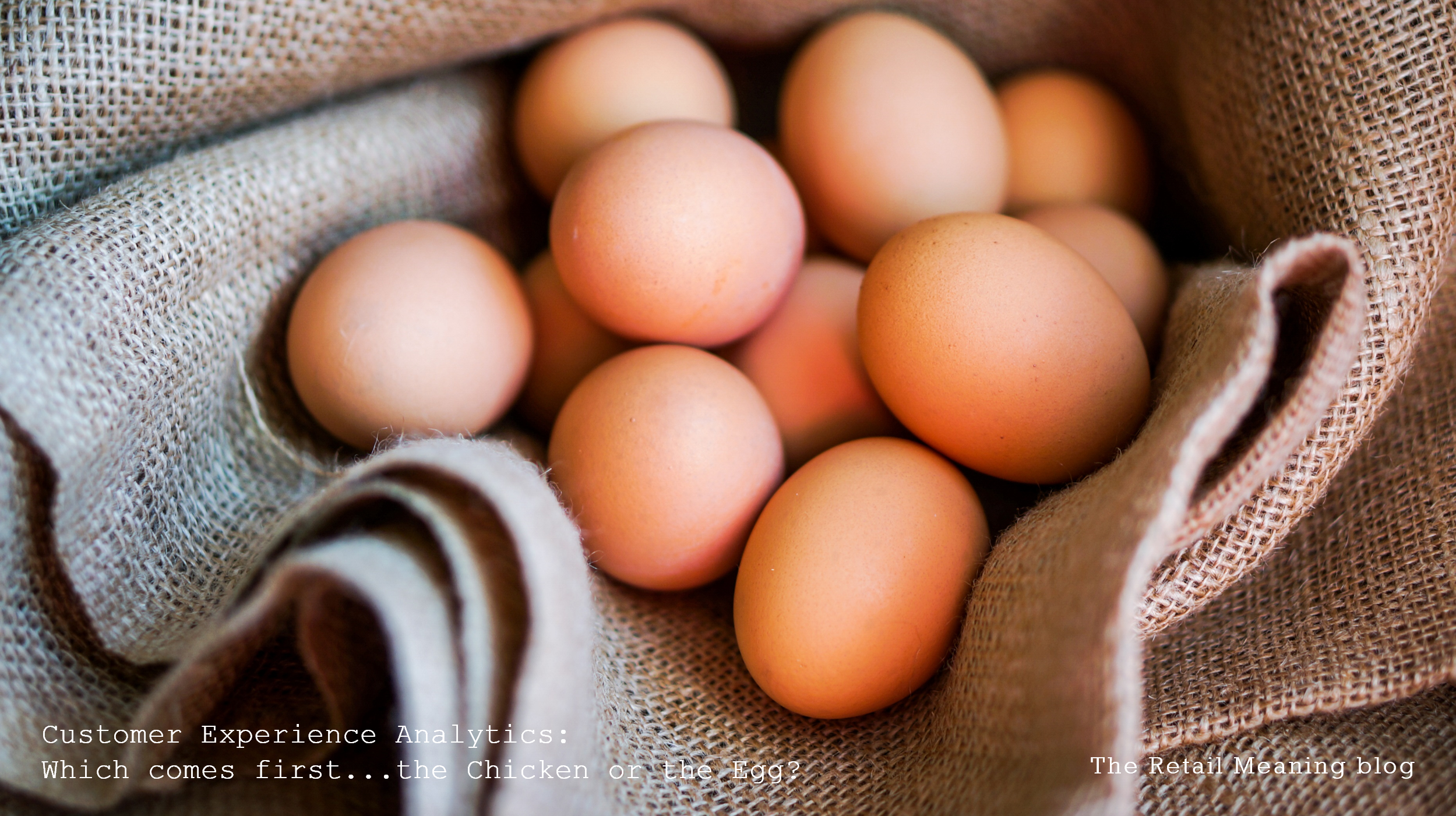Which should come first, the chicken or the egg?
How long will the chicken stay for, where will she go, and how many eggs will be in her basket?
The answers to customer experience analytics still seem tantalisingly out of reach for many retailers.
This year’s RBTE event at Olympia had its fair share of new IT initiatives as well as more established applications, refreshed, re-invented and re-packaged.
And it’s a few years now since store traffic & customer movement analytics first burst onto the scene and certainly into my personal consciousness. It claimed to offer to physical stores the killer insights until then only available online.
There’s still a general feeling that store analytics, using technologies to monitor the movement of customers, their dwell times, engagement rates and conversion rates within stores, has a great deal to offer in terms of store productivities.
And as we all appreciate today how much an exciting and engaging physical customer experience is essential to retail survival, it seems a very good time to look again at what store analytics can offer the retailer in the street.
So, Why the chicken? Why the egg? Well, there are fundamentally 2 ways to use analytics, and what it boils down to, if you’re the egg I guess, is how to identify what to do in stores to improve performance.
Because one thing is for sure – analytics is a measurement tool; it will not improve things simply by having it. The only thing that leads to improvements are changes to conventional store practices, processes and disciplines. Analytics allow actions in an informed way. Analytics allows those actions to be measured in an accurate way.
So to the eggs. The first use of analytics is the collection of “big data.” Analytics installed and data collected across a number of stores leads to the possibilities of identifying sales patterns and trends, which lead to actions across all stores to maximise these patterns – possibly in terms of store layouts, staffing or assortment planning.
Big data will also allow you to identify anomalies in your store chain – stores which fail to perform not just in terms of overall sales, but traffic, dwell times, engagement and conversion leading to decisive actions to improve these “stores of shame.”
The utopian dream for the “egg-heads” is the development of market-wide databases of retail patterns and benchmarking standards, so that retailers can identify where their performance falls short against the market. Such “consortiums” now exist, with retailers anonymously putting “all their eggs literally in one basket” for the benefit of all.
This is all impressive, however it should be recognised again that these benchmarking insights still require retailer actions to bear forth commercial fruit.
And outside the consortium model, for individual retailers “big data” analytics despite offering large benefits, are still longer-term and require significant ongoing outlay.
And so to the chickens, and let’s face it, any of us who have worked in stores are often to be found running around like them, even sometimes headless. But this is where the short-term, quick-win opportunities for analytics “lay,” if you’re a chicken.
When used in conjunction with traditional store appraisals and benchmarking, and a modicum of retail “nouse,” analytics can be used to monitor the impact of decisive quick actions, where the lessons can be rolled out to all stores, driving productivity and safeguarding ROI in things such as store design, fixtures, stock allocation, visual merchandising techniques, marketing initiatives, display principles and staff levels.
In effect analytics when used in this way stop the “chickens being headless.” For once, we now know not only what we are doing, but why we are doing it, with the guarantee that the running around will be very much worthwhile.
Also in its favour, the chicken route, rather than the egg, is quicker and easier to implement, requires less initial outlay and promises more immediate return on investment.
In summary, how best to use analytics in a retail business will vary company by company, and an important part of the whole process, is a thorough and initial appraisal of how best to use them – how many stores, how many parameters to measure and for how long.
These answers should be determined by the commercial opportunities in the current level of store delivery and customer experience – from assortment planning, store layout, display, promotions, events and customer service.
The bottom line.
Today’s improved and cost-effective store analytics can improve any retailer’s store performance, so don’t be a chicken when it comes to adoption.
Which chickens and eggs to adopt? Well generally, good advice would be not to put all your eggs in one basket but to apply analytics to give you the quick wins, as well as planning for the potential benefits of analysing “big data.”
Are your using traffic analytics but not getting the value from them?
Still wondering how to improve the customer experience, despite your customer data?
